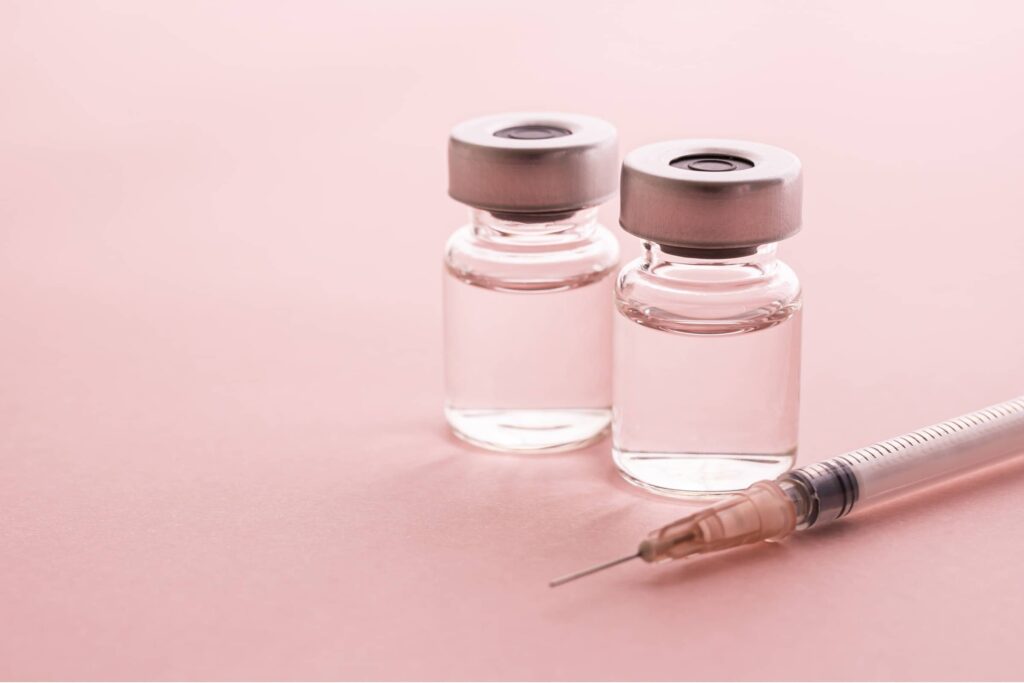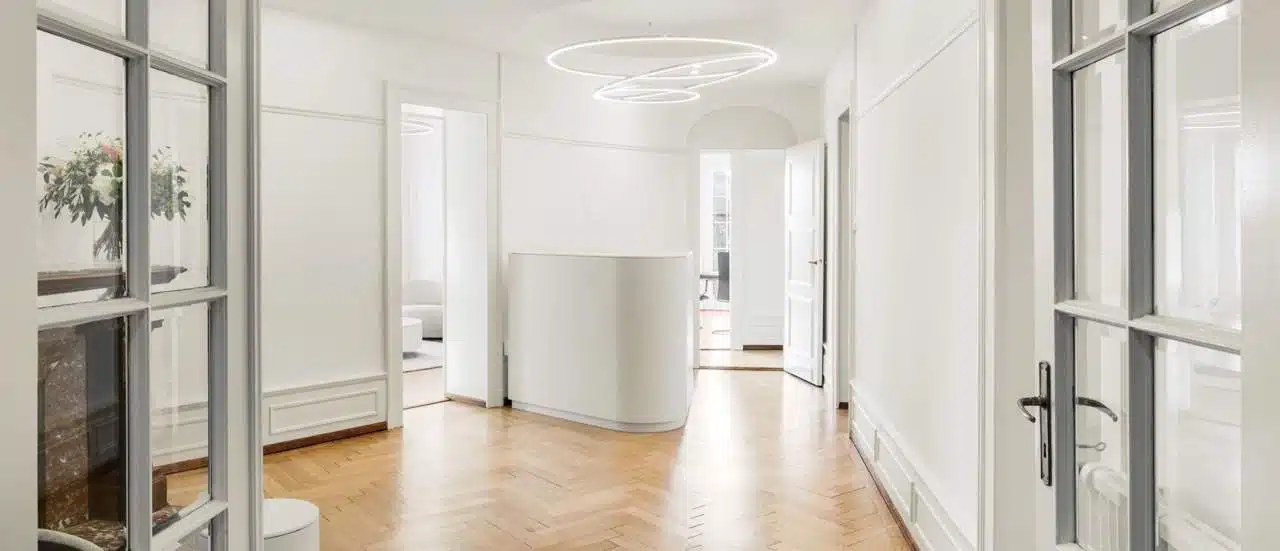Why is my face going slack?
Natural aging leads to an alteration in the physiological mechanisms that ensure skin tissue renewal. In other words, the activity of fibroblasts, the cells responsible for collagen and elastin production, is progressively reduced.
These two proteins are the main constituents of skin fibers, which give the skin its firmness and elasticity. The quality and quantity of these fibers then gradually diminish: the skin becomes less dense, less toned, and eventually slackens.
Skin sagging is not the only consequence of physiological aging on facial appearance. There is also fat loss and bone resorption in certain jawbones and the zygoma (cheekbone). The combination of these two phenomena leads to a loss of volume in the facial contours and a downward shift of fatty tissue in certain areas of the face.
How is hyaluronic acid used in aesthetic medicine?
Hyaluronic acid is a molecule found naturally in the body, notably in subcutaneous tissues, where it plays a major role in hydration. In aesthetic medicine, it is used in the form of injections for its revitalizing and volumizing properties.
The volumizing power of hyaluronic acid makes it a genuine filler that is particularly effective for :
-
- Treating static wrinkles (nasolabial folds, tear valleys, bitterness folds, etc.), which correspond to more or less deep, established furrows;
- Restore sagging or hollowed volumes of the face (cheekbones, sunken dark circles, nasal area, etc.).
- Treat fine lines that typically affect the lips and cheeks.
In the latter case, a slightly different, less volumizing hyaluronic acid is used. There are different types of hyaluronic acid, with varying degrees of volumizing and rehydrating properties. These possibilities guarantee a differentiated and therefore highly precise treatment, guaranteeing natural, harmonious results.
How is botulinum toxin used in aesthetic medicine?
Botulinum toxin is the trade name for what we call botulinum toxin. This substance is unique in that it induces muscle rest by inhibiting the function of the nerves that control them.
In aesthetic medicine, this property of botulinum toxin makes it an ideal solution for the treatment of dynamic wrinkles, including transverse forehead lines, frown lines and crow’s feet.
These wrinkles, also known as expression lines, are the result of repeated contractions of facial muscles. By injecting a certain quantity of botulinum toxin into these muscles, we induce a significant reduction in their activity: the skin becomes smoother and smoother again. Precise dosage, combined with the correct location of injection points, guarantees a natural result, with no set-in effect.
Botulinum toxin is also used in aesthetic medicine to treat excessive perspiration. Once injected, the substance inhibits the activity of the glands that produce sweat.
How do you choose between hyaluronic acid and botulinum toxin to rejuvenate your face?
Hyaluronic acid and botulinum toxin have different indications. As such, they are perfectly combinable treatments. It should also be remembered that these substances are gradually and completely absorbed by the body.
Dr. Favre systematically proposes an individualized treatment plan, tailored to your needs, the characteristics of your skin and your expectations.


